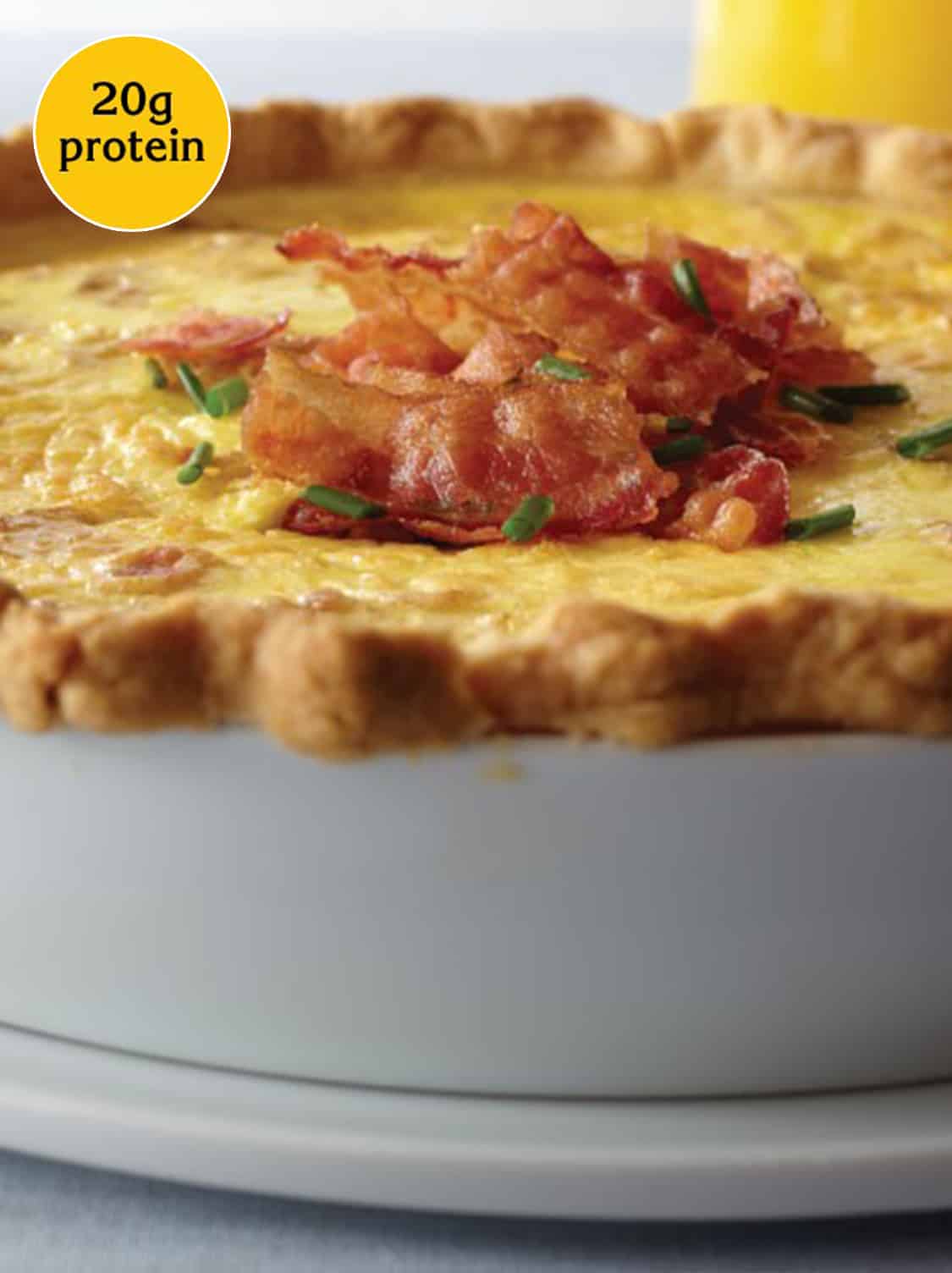

Directions
HEAT oven to 375°F. SPRINKLE cheese and bacon evenly in bottom of pie crust.
BEAT eggs, half-and-half, salt, pepper and nutmeg in medium bowl until blended. Carefully POUR over filling in pie crust.
BAKE in center of 375°F oven until center is almost set but jiggles slightly when dish is gently shaken and knife inserted near center comes out clean, 35 to 40 minutes. LET STAND 5 minutes. CUT into wedges.
Ingredients
- 6 large EGGS
- 1 1/4 cups half-and-half
- 1 9-inch ready-to-use pie crust
- 1 cup shredded Gruyere cheese (4 oz.)
- 8 slices bacon, cooked crisp, crumbled
- 1/4 tsp. pepper
- 1/8 tsp. nutmeg
Tips
If using frozen pie shell, choose the deep-dish size. Always bake your pie shell first to avoid a soggy crust.
How to tell if it’s done. Baked custards should be removed from the oven before the center is completely set. The center will jiggle slightly when dish is gently shaken. Custard will continue to “cook” after it’s removed and center will firm up quickly. Overbaked custard may curdle.
The knife test: Test for doneness with a thin-bladed knife. Insert knife about 1 inch from the center of a one-dish custard, midway between center and edge. If knife is clean when pulled out, the custard is done. If any custard clings to the blade, bake a few minutes longer and test again.
Cheese fillings: Quiche fillings containing cheese may continue to test “wet” even after they are done. Tap or gently shake the dish; remove quiche from oven when the center is almost set but still jiggles a bit.
This recipe is an excellent source of protein, vitamin A and choline, and a good source of folate
Per serving: 1/6 of recipe
- Calories 428
- Total fat 30 g
- Saturated fat 13 g
- Polyunsaturated fat 4 g
- Monounsaturated fat 12 g
- Cholesterol 239 mg
- Sodium 827 mg
- Carbohydrates 19 g
- Fiber 1 g
- Sugar 4 g
- Protein 21 g
- Vitamin A 179 mcg
- Vitamin D 1 mcg
- Folate 46 mcg
- Choline 177 mg
- Calcium 272 mg
- Iron 2 mg
- Potassium 262 mg
To ensure food safety, eggs should be cooked until both the yolk and the white are firm. Consuming raw or undercooked eggs may increase your risk of foodborne illness, especially for those with certain medical conditions. For recipes that call for eggs that are raw or undercooked when the dish is served, use either pasteurized shell eggs that have been treated to destroy Salmonella, or use pasteurized egg products.
